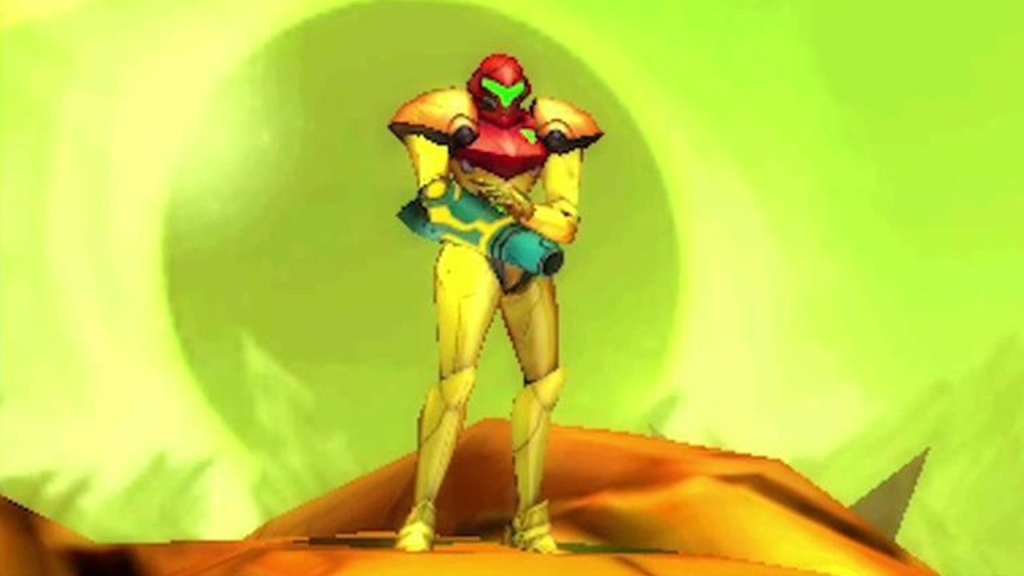First, there was Metroid. Samus’ debut adventure on the NES back in 1986 effectively created a whole new genre of game. And then, while the Mario franchise had sequel after sequel, and The Legend of Zelda had its own quirky follow up, Metroid got… nothing. That was the case for five years, until a sequel finally hit shelves. This imposing, vast game was getting a follow up. On GameBoy?
Metroid II: Return of Samus hit stores in 1991, and was met with decent success. The series was to consistently struggle to make a splash in its Japanese homeland, but those sci-fi dressings proved to be too much for Western audiences to resist. While the series has had ups and downs in popularity over the years, it’s always had a dedicated fan base among its Western audience.

Unknown to fans at the time however, was how emblematic Metroid II would come to be of the series’ somewhat erratic release schedule. Long, dormant periods would follow seemingly successful titles in the franchise, fans would clamour for a new entry, and sure enough, when one eventually popped up, it was never quite in the form that was expected or one hundred percent wanted.
The same thing was to happen with the 2017 remake of Metroid II: Return of Samus, somewhat cheekily titles Metroid: Samus Returns. Wherever she’s been, she certainly seems to come back a lot. Turn your mind back to 2010. Metroid: Other M on the Wii had just been released, and proved to be an extremely divisive entry in the franchise (one which I admittedly quite enjoyed). Fans of the series had a bad taste in their mouths and needed a palette cleanser: something new to focus their affections on.
Nothing. For five years, nothing. Then, at E3 2015, Nintendo finally announced a new entry. Metroid Prime: Federation Force was announced in what could possibly be seen as one of the most prominent examples of a company being profoundly out of touch with what their fan base wanted and needed. A spin-off competitive first person shooter bore about as little resemblance to the main series as was possible. Fan reaction was immediate; the disgust was palpable. How could Nintendo have done this? This was, many said, the final nail in Metroid’s coffin.
In 2017, the Nintendo Switch released, and Nintendo fans wondered whether Nintendo’s new focus on developing for just one platform would result in previously maligned franchises such as Metroid to get another chance in the spotlight. The answer? Kind of.

In June 2017, not long after the Switch release, Nintendo finally announced a new core entry in the Metroid franchise. Again, kind of. The new entry was a remake of 1991’s Metroid II, and… on the Nintendo 3DS. A platform that, while still somewhat successful, was not exactly thriving in the West anymore. Fans once again lamented Nintendo’s out of touch decision making. Where Mario and Zelda were getting expansive entries on the shiny new console, Metroid was once again relegated to the little leagues.
Criticism was tempered when, upon release, fans discovered that Metroid: Samus Returns was a surprisingly solid entry in the franchise. Nothing revolutionary, but that wasn’t what the series needed at the time. After years of messing around with fans expectations and desires, a return to form was exactly what was required.
I personally got around to playing the game this past year, picking up a copy just before I left Japan. I had just finished Metroid: Zero Mission for the first time, and was full of excitement for the series. Invigorated, I rushed out to buy the 3DS title the next day. At first, I was very impressed by how the series had evolved. Everything felt slick, and the new counter mechanic added an extra bit of flair to combat. Exploration, possibly the most important thing for a Metroid title to get right, was rewarding, with upgrades and collectibles littering these vast caverns.
Samus Returns places more focus on combat than its predecessors however – the game’s structure sees you arrive in a new area only to be given a set number of metroid-fused creatures to hunt down before you can move on. I’m the early hours, this was an interesting conceit, but it got tired and repetitive pretty quickly. Whereas I’d made my way through Zero Mission in just two sittings, Samus Returns felt like it was dragging, and there were a few times I had to force myself to pick it up. The feeling of finally completing it was a mixture of thrills and relief that I’d not have to hunt any more of those damned metroids.

The seemingly massive number of metroids that you’re required to hunt through the game might not be so draining if they weren’t the same enemy repeated. There are a handful of different metroid variations, with the challenging variants getting gradually more common as the game progresses. Meeting a new variant is exciting as you figure out how to defeat it, but by the fourth time you encounter them the experience does begin to wear a bit thin.
It may sound like I’m picking Samus Returns apart, but on the whole I do think that this was a fun game. Moment to moment gameplay was fun, and, with Samus’ speedy movements, exploration is genuinely a joy. It’s just a shame that the focus of the game feels like it’s been placed on its weakest area. The foundations of a brilliant game are all laid here, so it’s a shame that it falls short of greatness. The latest game in the series, Metroid Dread, was created by the same developers. I’m excited to see what they do in their second outing with the franchise. There are two titles left in the series before I get there however, with Super Metroid, possibly one of the most highly-praised titles of all time next on the list.
